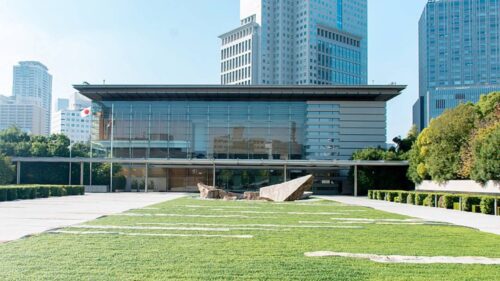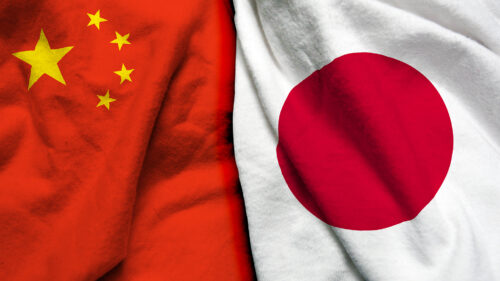Japan has been one of the world’s great powers since it defeated Russia in 1905. After its devastating 1990 economic crash, however, it suffered 30 years of economic stagnation. Japan was down, but not out. In March, for the first time in eight years, the Bank of Japan announced it was raising interest rates into positive territory. The Nikkei Stock Average surged by 30% over a 12-month period and finally broke its previous record set in 1989.
Japan is growing richer and more confident. Thus, the island nation is becoming increasingly assertive abroad. It is flexing its economic muscles, deepening relationships with Western firms and pouring investments into Africa. Tokyo is simultaneously staking out a foreign policy independent from Washington’s. The Kantei has been more proactive in isolating China than the White House has been. The Quadrilateral Security Dialogue (Japan, US, Australia and India) was Japanese Prime Minister Shinzo Abe’s brainchild. Recently, Tokyo called the independence of Taiwan an issue of Japanese national security.
In parallel, Japan is shifting its military posture from defense to offense. Tokyo is doubling its military budget over a five-year period. The Japan Maritime Self-Defense Force is developing two aircraft carriers. These warships are useful, not only for defending the homeland, but for projecting power overseas. The Japanese military is also stockpiling billions of dollars’ worth of Tomahawk missiles.
Foreign investments increase
As Japan’s internal economy resurges, it is an increasingly attractive destination for foreign capital. Major American firms like Microsoft, Oracle, Micron and Blackstone have ramped up their investments. The Taiwan Semiconductor Manufacturing Company (TSMC) opened its first plant in the country and has announced plans for a second. Additionally, esteemed British boarding schools Malvern College, Rugby School and Harrow International School have established locations in Japan in recent years. This has led to an influx of foreign students, especially from China.
Japan is making its own investments abroad. The nation has invested approximately $120 billion in Africa, with the Ministry of Foreign Affairs promising an additional $30 billion over the next three years. This move boldly counters Chinese influence on the continent. Observers are wary that China’s Belt and Road infrastructure development program is a tool for economic coercion in developing nations.
However, it’s important to note that Japanese investment alone is not enough to outpace China. Japan and the UK are also set to make a joint investment in mining critical minerals like cobalt, lithium, copper and graphite in Africa and Latin America. These raw materials are key as the world transitions toward electric vehicles and renewable energy.
Private investors are also taking notice. The African Development Bank has begun pitching to Japanese investors. Private Japanese trading companies, such as Mitsui and Sumitomo, are now looking to expand their global economic footprint in resource-rich African and Latin American countries.
Shinzo Abe’s faction pushes a more engaged foreign policy
In Japan’s domestic political sphere, the Liberal Democratic Party (LDP) has weathered its party-funding scandal and remains firmly in power until 2025. The LDP, now dominated by the faction of late Prime Minister Shinzo Abe, is pushing the nation towards greater nationalism and international assertiveness. Historically, Japanese foreign policy had been heavily influenced by US interests. However, the United States’ apparent defense dependability has declined, particularly in light of Donald Trump’s isolationist tendencies. The LDP is asking: How can Japan fend for itself?
Tokyo has found part of the answer in strengthening its regional alliances. Japan negotiated a rapprochement with South Korea and has bolstered strategic relations with India. It has also made repeated pledges to defend Taiwan and even “liberate” it from Chinese aggression if necessary, demonstrating a newfound assertiveness and willingness to deploy units abroad.
Japan remains a close alliance with the US, but it is now cooperating with the US as a sovereign an independent partner, not as a vassal state.
A majority of members in the National Diet now support Japan taking a more active defense role. Late last year, Japan’s Cabinet approved a record $55.9 billion (7.95 trillion yen) defense budget for the 2024 fiscal year — a 16.9% increase from 2023. This amount will increase each year until it reaches $47.7 billion (6.6 trillion yen), making each defense budget until 2027 the highest ever recorded. Anti-militarism has significantly receded, marking a notable shift in the nation.
This comes amid rising regional threats from North Korea, China, and Russia. Chinese military movements in the East and South China Seas have increased, North Korea continues to test its armaments, and most notably, a Russia-China joint fleet conducted a naval exercise circumnavigating Honshu, Japan’s main island. Meanwhile, the US is preoccupied with its own domestic elections and political polarization, which makes it seem less able to protect Japan. These factors have heightened Japan’s threat perception, necessitating a more robust and sovereign defense strategy.
Military Shift from Defense to Offense
Due to increased perceptions and realities of threat, recent military actions in Japan represent revolutionary changes since 1945. From 1952 to 2020, Japan’s military capabilities were limited strictly to defensive weapons that served as complementary support units to US combat fleets. Now, Japan’s defense doctrine has undergone a clear strategic shift, allowing for more offensive actions and weapons.
There has been a substantial rise in military expenditure from the increased budget. Japan is in the process of building two aircraft carriers, JS Kaga and JS Izumo, set to host 28 F-35 jets. This will not only enhance defense capabilities but also project offensive power overseas. Additionally, Japan has invested $2.3 billion in a deal with the US to purchase 400 Tomahawk missiles. Possession of these long-range missiles allows the island nation to strike targets up to 1,500 miles (2,500 km) away — which can reach deep into mainland China.
Technological advancements in missile interception, radar detection and robotics further bolster Japan’s security and provide valuable support to its allies.
What’s on the horizon for the Land of the Rising Sun?
Despite these strides, Japan faces enduring challenges. Economically, although interest rates have turned positive, they remain close to zero. The nation is not yet firmly on a growth path. Additionally, it still grapples with high debt and significant demographic issues. An aging population and declining birth rates pose substantial obstacles to labor force growth and economic sustainability.
Japan is in a troubled neighborhood. Its proximity to Russia, North Korea and China heighten the risks of a conflict which could further complicate its strategic plans.
Yet there are many reasons for hope. Reflecting on the global changes over the past few years, it’s evident that even if Japan itself has not fundamentally altered, the world’s perception of it has, and Japan is taking a new role in it.
Today, Japan stands as a truly sovereign state for the first time since 1945. The nation is reclaiming a level of autonomy and influence not seen since the 1920s. This newfound sovereignty marks a significant departure from its post-war stance and sets the stage for Japan to play a more prominent role on the global stage.
[Ting Cui wrote the first draft of this piece.]
The views expressed in this article/podcast are the author’s own and do not necessarily reflect Fair Observer’s editorial policy.














Comment